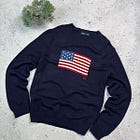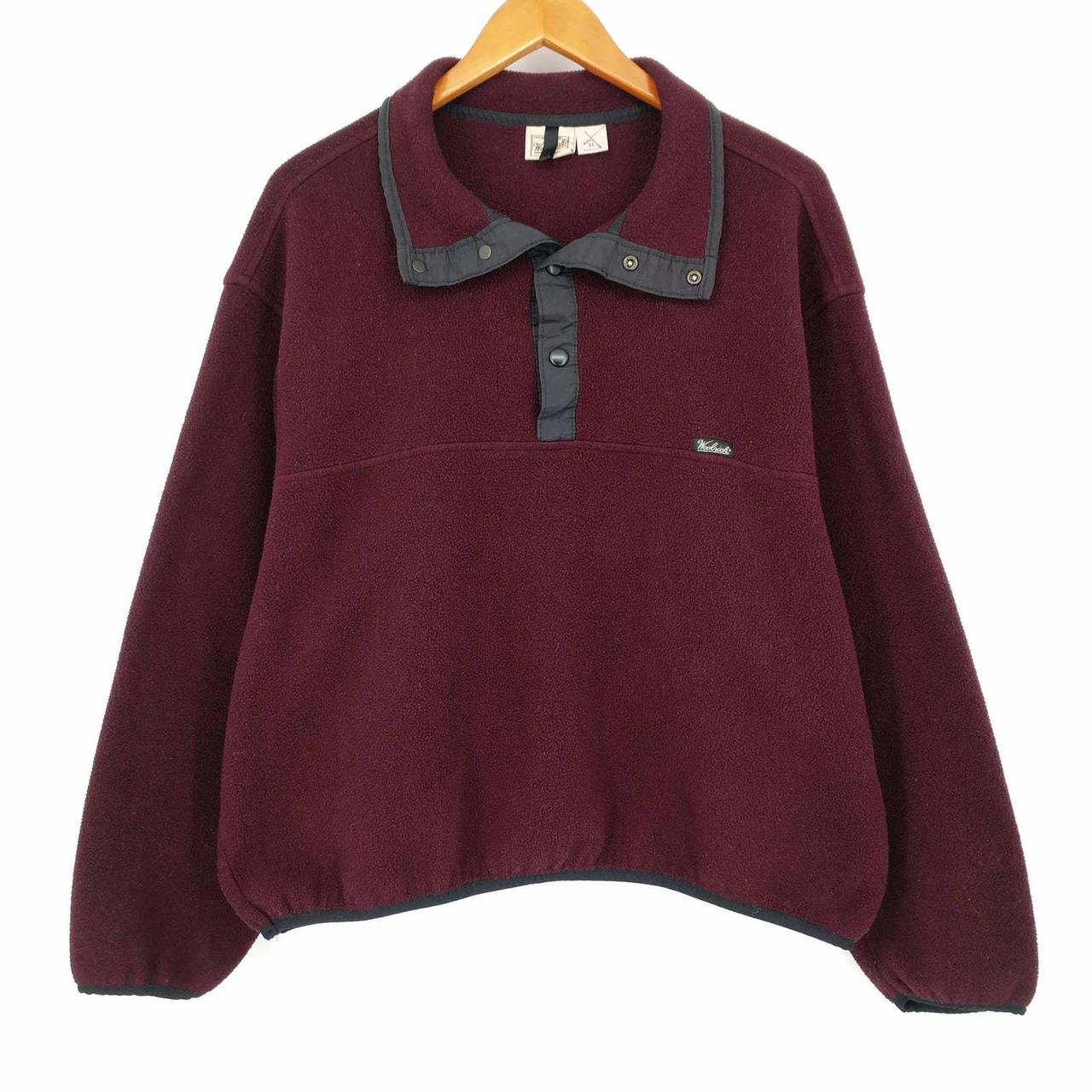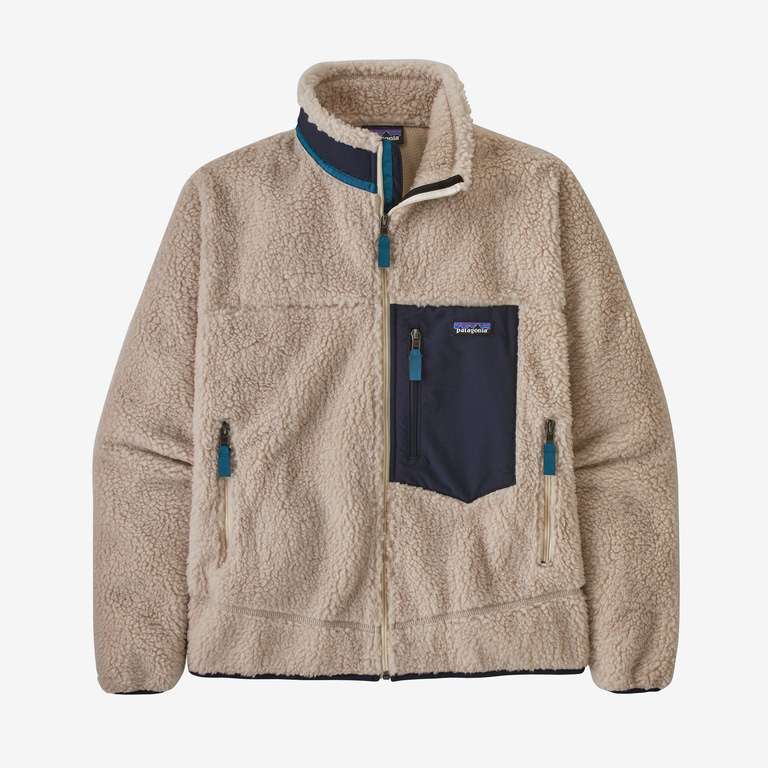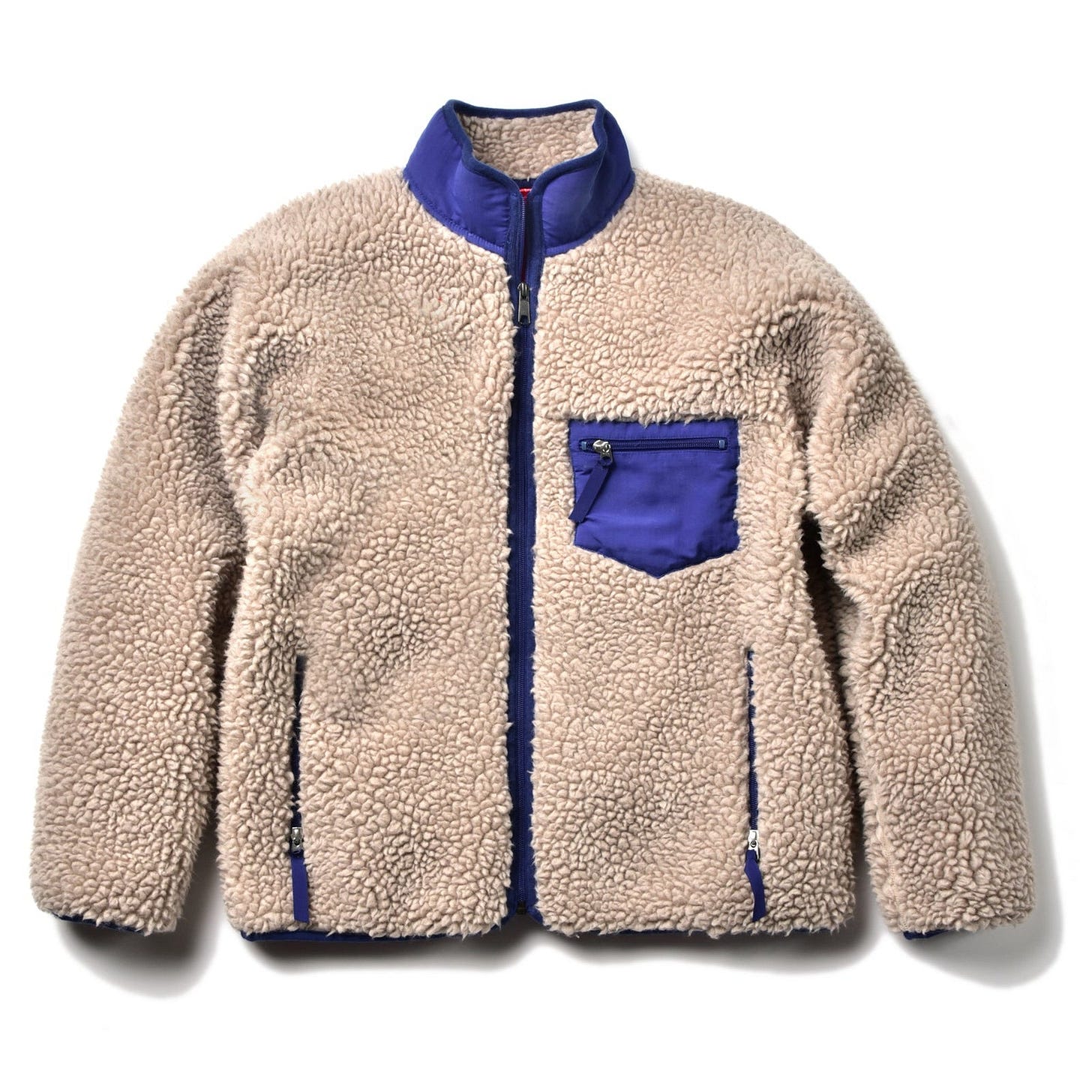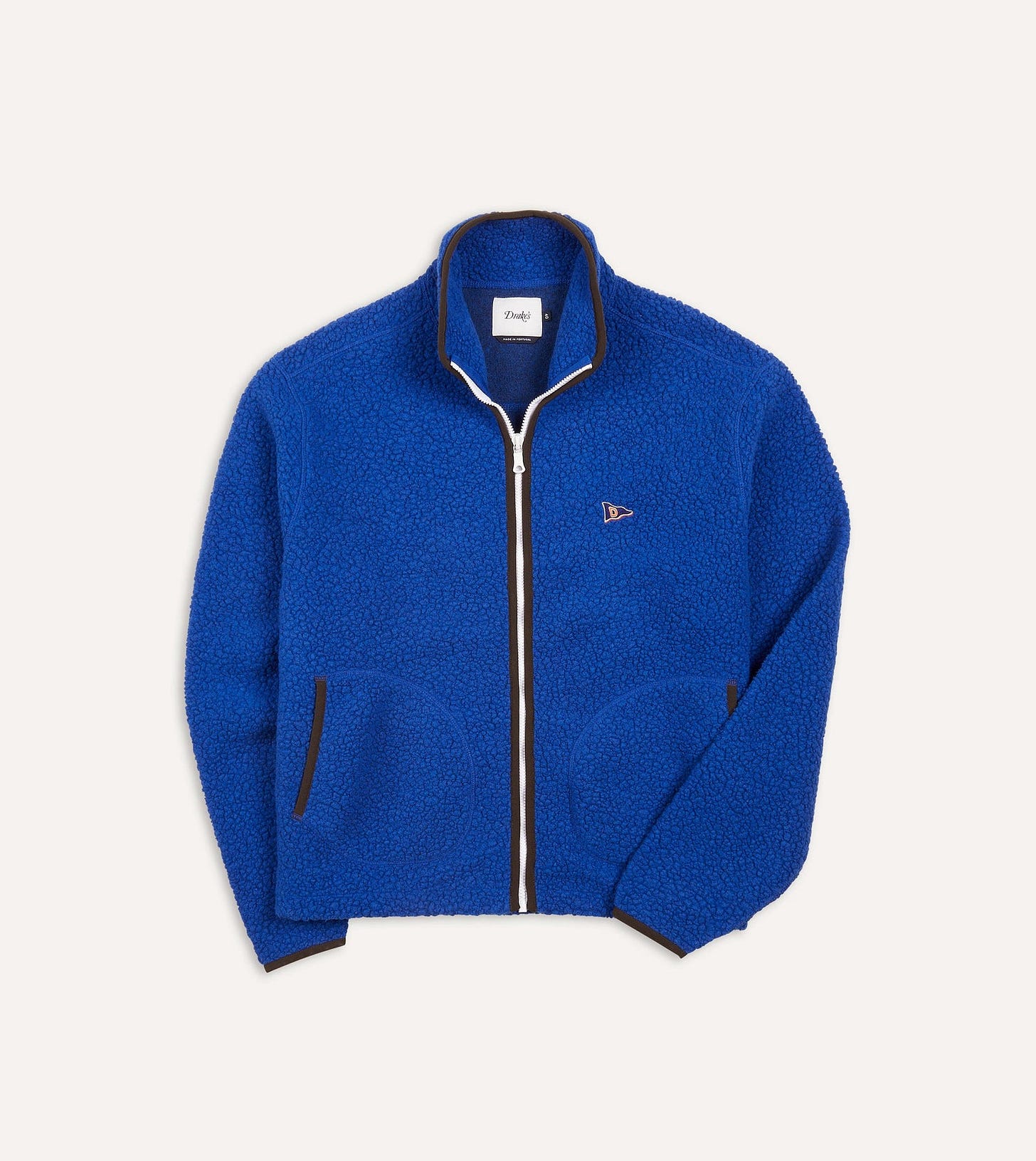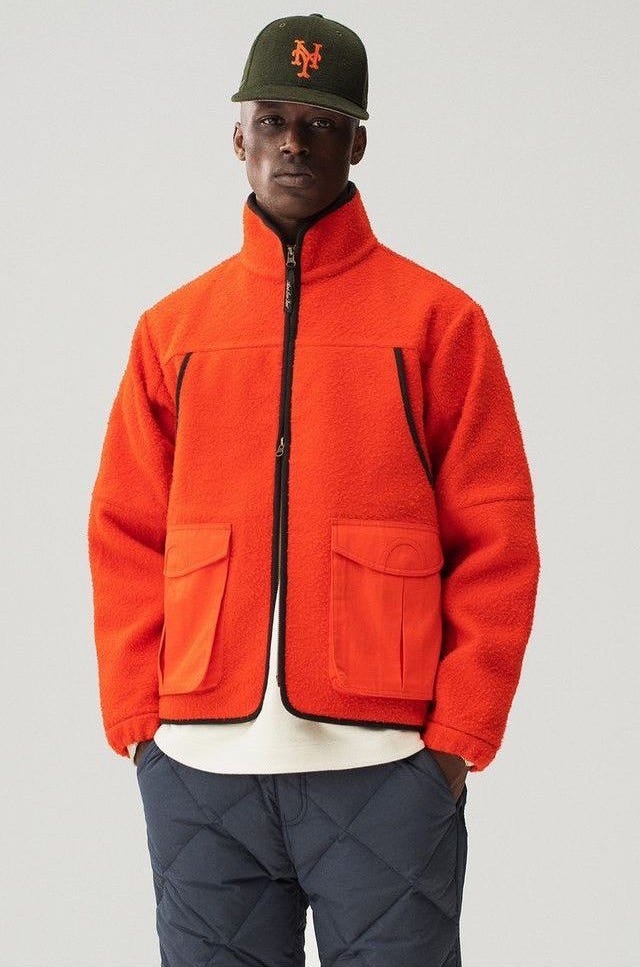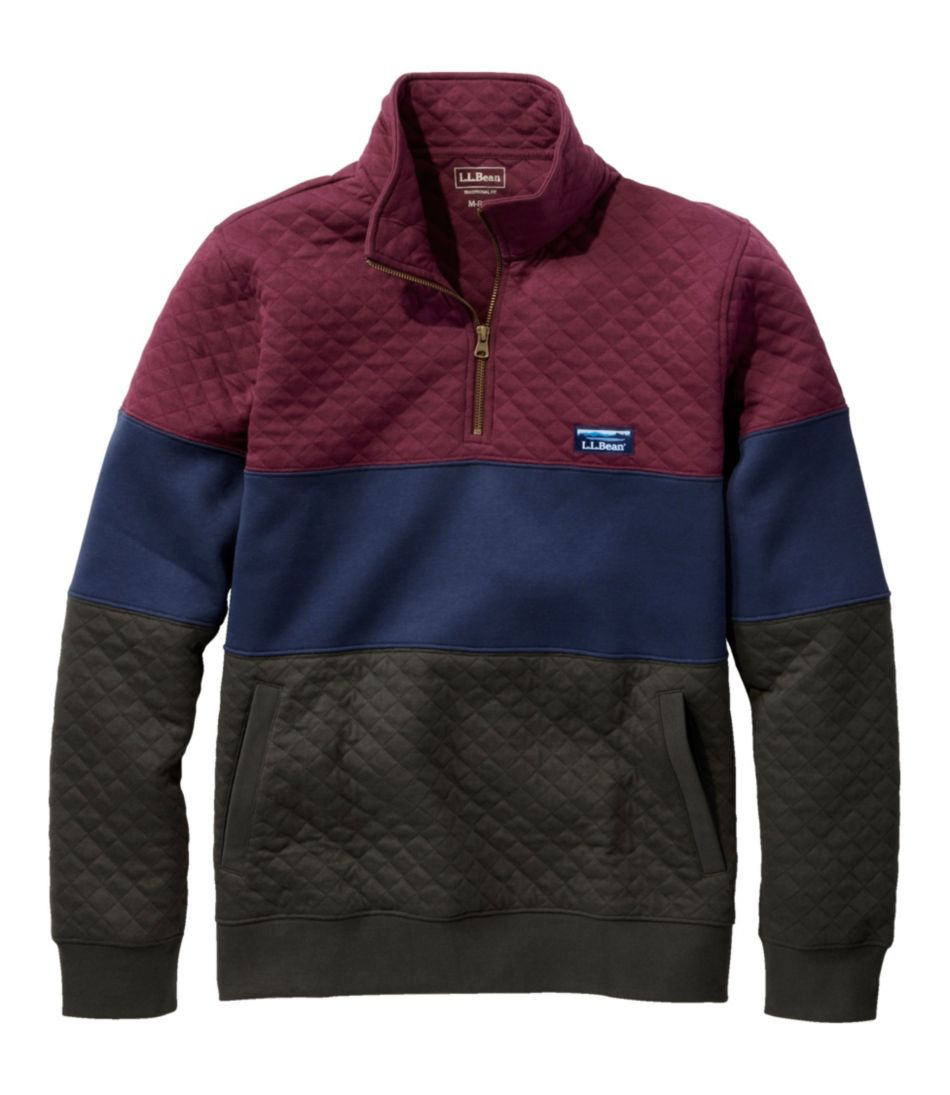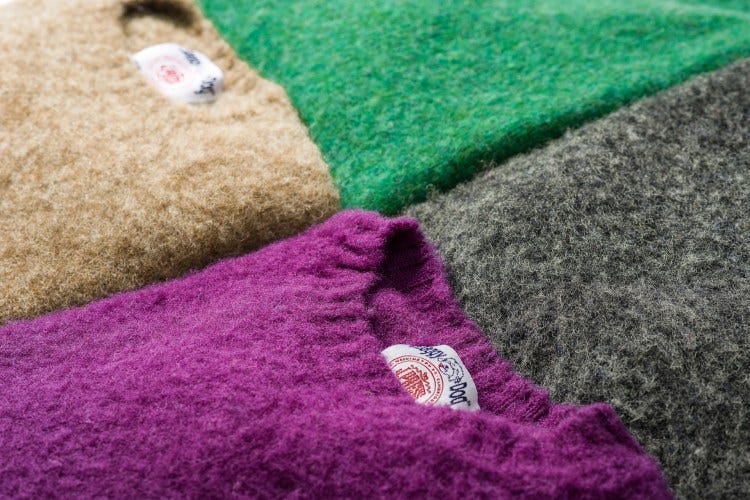Welcome to this week’s meeting of The Prep Club, last week’s bulletin is available here, or on your way out, featuring thoughts on signalling and sweatpants, making it perhaps the riskiest publication from the club to date. This week, thoughts on fleece, a confusing term, which I’ll endeavour to make sense of.
Small Favour: If you wouldn’t mind, please share this post, or the club as a whole, with a friend who you think might be interested, it would mean a whole lot. Please also subscribe if you haven’t yet, again, it makes a big difference.
Fleece, as a term in fashion, is rather tricky to nail down, referring possibly to a fibre, fabric or garment. It is the garment and the fabric to which this meeting pertains. We are taking fleeces to be an over-arching category of outerwear: outdoor-inspired jackets in pile or pile-adjacent fabrics. The two most classic formats being the full zip jacket or quarter-snap pullover, both of which are enjoying a slight jolt in popularity as of late. They can lend a welcome modern edge to a collegiate wardrobe, featuring heavily in the New Wave Ivy presented in last week’s bulletin. Depending on the piece they can also lean into the heavy duty/ rugged ivy expressions in a very lovely manner, or even into retro gorpcore.
The purpose of today's meeting is to present some fabrics commonly used in the construction of these pieces, who uses them, what they're made of, the benefits thereof. The hope is to demystify the sector, and thus help club members stay warm this winter, whilst still looking their very best.
Polar Fleece
Here’s where it starts to get a touch confusing, now we are referring to fleece as a fabric; a brushed, synthetic cloth, usually 100% polyester specifically polyethylene terephthalate) or acrylic.
In the case of polar fleece it is the former, 100% polyester with double sided pile, originally popularised by Polartec. This is likely the fabric one envisions when hearing “fleece”, it has a particular outdoor pedigree and subsequent outdoor connotation. It is also lightweight, but warm.
This is a popular choice for quarter-snaps, particularly those produced by Woolrich, Made in the USA using the original Polartec 200 series fabric.
Sherpa Fleece
The heavier sibling to polar fleece, sherpa or deep-pile is characterised by, shocker, a much deeper, one-sided pile which often appears to look like shearling. The bulkier nature of this fabric makes it more suited to being worn as outerwear, than as a layer.
There are two paths that can be taken, the first is a firmer, more matted pile which sees use by Columbia and L.L. Bean. on quarter snaps. The second is a softer, fluffier pile most famously used on the iconic Patagonia retro-X fleece.
Sherpa fits neatly into both the modernised ivy, and retro heavy duty looks, if there was one fleece to rule them all, it might well be this one.
There is the issue, however, which plagues any variety of fleece, and that is its over-reliance of synthetic fibres. If, like myself, you generally prefer to keep your wardrobe as natural as possible, fleeces (the garment) are a little trickier to navigate, but there are a few options.
Wool Pile
The best place to start in that case, is the natural fabric which Sherpa seeks to emulate, the woolly fleece of a sheep.
Wool pile is rare to come across, and usually costly when one does. The most notable use is in The Real McCoy’s wool pile jacket, a 100% wool recreation of the iconic Patagonia jacket. There are also offerings from hunting outfitters Chevalier.
Use cases are almost identical to Sherpa, since one is an emulation of the other, though wool pile will be significantly heavier. Wool fleece will also age in perhaps a more pleasing manner than Sherpa, natural fibres always tend to outclass synthetic when it comes to longevity.
Bouclé
Used first in furniture design, and then in fashion by Chanel in the 1960s. Bouclé is a woven fabric made from yarn with loops which results in a pile like texture. It can be made from wool, silk, cotton, synthetics or a blend of fibres.
Use of bouclé for fleece-style garments is a recent development, as such it lends itself nicely to those “new wave Ivy looks”. Most notably used by stalwarts Drake’s for their fleece jackets and also by Columbia. Drake’s bouclé is a wool/nylon/polyester blend, Columbia’s is 100% synthetic. It presents with a more matted, “nubby” texture compared to traditional deep-pile.
Casentino
Hailing from the eponymous village in Northern Italy and traditionally used for linings or outerwear. Casentino is a brushed 100% wool which results in a fluffy texture, leading modern houses to use it for fleece jackets.
Perhaps most famously used by Aime Leon Dore, but also Percival, Drake’s, and Alex Mill as a more affordable option.
It’s hard not to play favourites here, Casentino has about it an air of effortless and learned luxury, it elevates the fleece jacket to another sort of garment. As with Bouclé this will modernise a look.
Double-knit Quilt
Moving away from fluffy fabrics momentarily, a filled and quilted construction usually made from cotton or poly cotton, offers another alternative.
Used by Ralph Lauren and L.L. Bean across quarter snaps and jackets.
This cloth can lean a little towards the finance-bro connotations, especially when coming from the house with a horse logo. Leaning toward outdoors informed constructions is imperative if one wishes to avoid this. New pieces in this cloth also tend towards being slimmer cut, going vintage will avoid this.
Bonus: Brushed Wool
In relation to the excellence of Casentino for this style of garment, it would be very interesting to see how a traditional shaggy-dog style Shetland brushed wool might look in the same context. I say would as I cannot find an example of it being done as of yet.
This would have the classic Ivy style appeal of brushed wool, in the modernised context of a fleece-style jacket maybe with some ripstop panelling. Hopefully a manufacturer gets to this sometime soon.
Any of the options presented here are highly wearable and it cannot go unstated that some are far more accessible than others. Whilst wool pile and Casentino are truly stunning cloths, the come at significant cost, especially when considering the ubiquity and affordability of synthetic fleece. As always budget is the foremost compass through which we navigate the mire of wardrobe development. The Club won’t make a further endorsement of any one of these fabrics, though I’ve already divulged my personal favourite, the hope is the above information allows members to make an informed decision on which is right for them.
Prep Club adjourned, see you soon.





